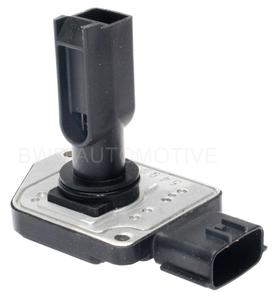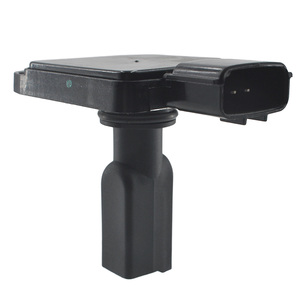
All categories
Featured selections
Trade Assurance
Buyer Central
Help Center
Get the app
Become a supplier

(984 products available)





































Engine parts for Mazda VA are components used in internal combustion engines. The Mazda R8 VA engine is a V8 engine developed by Mazda for use in the Mazda RX-8 sports car. The RX-8 VA engine is a Wankel rotary engine that uses the rotary motion of triangular rotor to convert chemical energy from fuel into mechanical energy.
The Mazda VA engine has the following parts:
Engine Oil
The Mazda 3 engine requires regular oil changes. At each oil change, use the recommended engine oil for the Mazda 3. This will ensure proper lubrication and protection for the engine parts.
Air Filter
The Mazda 3 engine has an air filter that needs to be replaced periodically. The air filter keeps dirt and debris from entering the engine. A clean air filter helps maintain good airflow and engine performance.
Spark Plugs
Depending on the model year, some Mazda 3 engines use spark plugs that need to be replaced every 60,000 to 120,000 miles. These spark plugs are designed for optimal ignition efficiency. Checking and changing spark plugs at the recommended intervals helps ensure smooth engine operation.
Coolant
The cooling system maintains the engine at the proper temperature. It requires periodic checks of the coolant level and quality. Topping up or replacing the coolant as needed protects against overheating or freezing damage to the engine.
Fuel Filter
The fuel filter cleans the gasoline before it enters the engine. A clogged fuel filter restricts flow. Symptoms may include poor acceleration or stalling. Replacing an old fuel filter resolves these issues by restoring proper fueling.
Oil Filter
A new oil filter should be installed with every oil change. The oil filter prevents contaminants from entering the engine oil. A clean oil filter protects critical engine components from wear and sludge buildup.
Tires
Maintaining proper tire pressure and tread depth is important for vehicle stability and traction. Periodic visual inspections of the tires are advisable. Uneven wear or low treading can affect how well the tires grip the road.
Timing Belt
Some Mazda 3 models use timing belts that need to be replaced on a specified mileage schedule. The timing belt keeps the engine's valves and pistons synchronized. A worn timing belt prevents proper engine timing, which can cause starting problems or damage. Replacement before reaching the mileage limit is essential.
Throttle Body
The throttle body controls how much air enters the engine based on accelerator pedal position. Over time, the throttle plate and housing can get dirty. This restricts airflow and affects engine response. Periodic cleaning of the throttle body removes any buildup. This restores smooth operation of the accelerator.
Valves
The intake and exhaust valves open and close to control airflow in and out of the engine cylinders. They require periodic adjustment of their clearances. Properly spaced valves ensure good sealing and engine compression. A valve clearance check and adjustment per the maintenance schedule keeps them functioning correctly.
Suppliers Reputation
Wholesale buyers should partner with reputable suppliers. They can conduct market research to read reviews and testimonials of the suppliers. Also, they can ask for recommendations from business partners, friends, and relatives.
Quality of Parts
Wholesale buyers should source parts that are of high quality. Such parts have a long useful life and can retain their condition, minimizing the engine's wear and tear. To be certain of the quality, buyers can source from suppliers that are known to offer products with quality standards. They can look for suppliers with certifications like ISO 9001, which shows that the products are of quality.
Diversity
Wholesale buyers should get a supplier with a wide range of products. Such a supplier should offer different parts with different sizes, models, and designs. This will enable the buyers to find all the engine parts for Mazda VA under one roof.
Warranty and Guarantee
Wholesale buyers should work with suppliers that offer a guarantee and a warranty for engine parts. In case there are any damages or defects when using the parts, the supplier can replace or refund the money.
Payment Options
Wholesale buyers should get suppliers that offer diverse payment methods. Such a supplier should offer secure payment methods like PayPal and bank transfers. They should also offer alternative payment methods like cash on delivery.
Shipping and Delivery
Wholesale buyers should partner with suppliers that offer fast delivery. They should communicate and agree on the shipping duration. Also, they should get a supplier that delivers the products without delays.
Customer Service
Wholesale buyers should get a supplier with a good customer service team. In case they need clarification or assistance, they can get it promptly.
Many parts of the Mazda engine can be replaced DIY. However, it is important to have the right tools for the replacement job. These tools include sockets, wrenches, pliers, a torque wrench, and screwdrivers. When replacing parts like the engine oil filter, spark plugs, and air filter, follow the steps below. Before getting started, read the owner's manual to know the location of the engine parts.
Engine Oil Filter
Use a socket and ratchet to remove the old engine oil filter. Then, use a clean rag to wipe the area where the filter mounts on the engine. Open the new engine oil filter and pour a little engine oil inside it. This will help the engine oil filter prime faster. Then, mount the new engine oil filter onto the mounting area and tighten it up.
Engine Air Filter
Unscrew the air filter cover and remove the old engine air filter. Then, clean the area and put in a new air filter. Screw the cover back on.
Engine Spark Plugs
Use a wrench to remove the spark plug wires. Then, use a spark plug socket and ratchet to remove the old spark plugs. Install the new spark plugs and tighten them up. Reconnect the spark plug wires.
Q1: How can I tell if my Mazda's engine parts are worn out?
A1: Common signs of worn-out engine parts include decreased fuel efficiency, rough idling or hesitation, noise from the engine, warning lights on the dashboard, and decreased engine performance. It's essential to have a certified technician inspect the engine parts to determine their condition.
Q2: What should I do with old engine parts after replacing them from my Mazda?
A2: Old engine parts should be disposed of according to local regulations. Many new parts suppliers offer a take-back program for old parts, promoting recycling and environmentally friendly disposal. Check with the supplier or local recycling centers for proper disposal options.
Q3: Are aftermarket engine parts for Mazda VA as good as genuine Mazda parts?
A3: Aftermarket parts can be of comparable quality to genuine Mazda parts. However, one should ensure they meet Mazda's specifications. It's crucial to choose reputable brands and suppliers to ensure the quality and durability of aftermarket engine parts.
Q4: How often should engine parts be inspected?
A4: It's recommended to inspect engine parts at least once every six months or during regular maintenance. Early detection of wear and tear can prevent severe engine damage and save on costly repairs. Additionally, parts like air filters and spark plugs should be checked regularly and replaced when needed.
Q5: Can I replace engine parts myself from my Mazda, or should I always go to a mechanic?
A5: While some minor engine part replacements are manageable DIY tasks, like replacing air filters, it's best to consult a mechanic for significant replacements or repairs. Ensure all parts are correctly installed to avoid engine damage and maintain warranty validity.